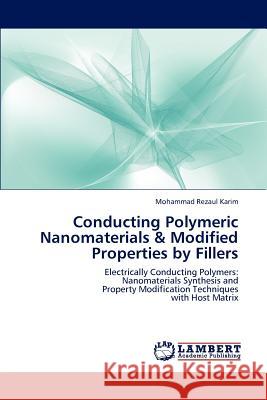Conducting Polymeric Nanomaterials & Modified Properties by Fillers » książka
Conducting Polymeric Nanomaterials & Modified Properties by Fillers
ISBN-13: 9783845429854 / Angielski / Miękka / 2011 / 140 str.
The use of nanomaterials has extended to a broad range of applications, for example chemical synthesis, microporous media synthesis and catalytic combustion, contributing to achievement of improved or promising results. Electrically -conjugated conducting polymers (CP) and their nanomaterials has been the subject of tremendous interest in recent years because of their unique electrical, mechanical, and physical properties. Here is given different CP (polyaniline, polythiophene, and polypyrrole) nano-meter scale materials/composites synthesis routes by using the in-situ chemical oxidative and/or radiation-induced polymerization method. To enhance the properties of conducting polymers in several orders of magnitudes, different host matrixes (single & multi wall carbon nanotube, activated carbon and metals or metal oxides) are used. The properties of the resultant nanomaterials have been investigated by using various techniques. The overall objectives of this manuscript is to present the versatility of electrically conducting polymer nanomaterials synthesis and their properties improvement mechanism with different host matrixes for increasing their applications capability.
The use of nanomaterials has extended to a broad range of applications, for example chemical synthesis, microporous media synthesis and catalytic combustion, contributing to achievement of improved or promising results. Electrically π-conjugated conducting polymers (CP) and their nanomaterials has been the subject of tremendous interest in recent years because of their unique electrical, mechanical, and physical properties. Here is given different CP (polyaniline, polythiophene, and polypyrrole) nano-meter scale materials/composites synthesis routes by using the in-situ chemical oxidative and/or radiation-induced polymerization method. To enhance the properties of conducting polymers in several orders of magnitudes, different host matrixes (single & multi wall carbon nanotube, activated carbon and metals or metal oxides) are used. The properties of the resultant nanomaterials have been investigated by using various techniques. The overall objectives of this manuscript is to present the versatility of electrically conducting polymer nanomaterials synthesis and their properties improvement mechanism with different host matrixes for increasing their applications capability.











